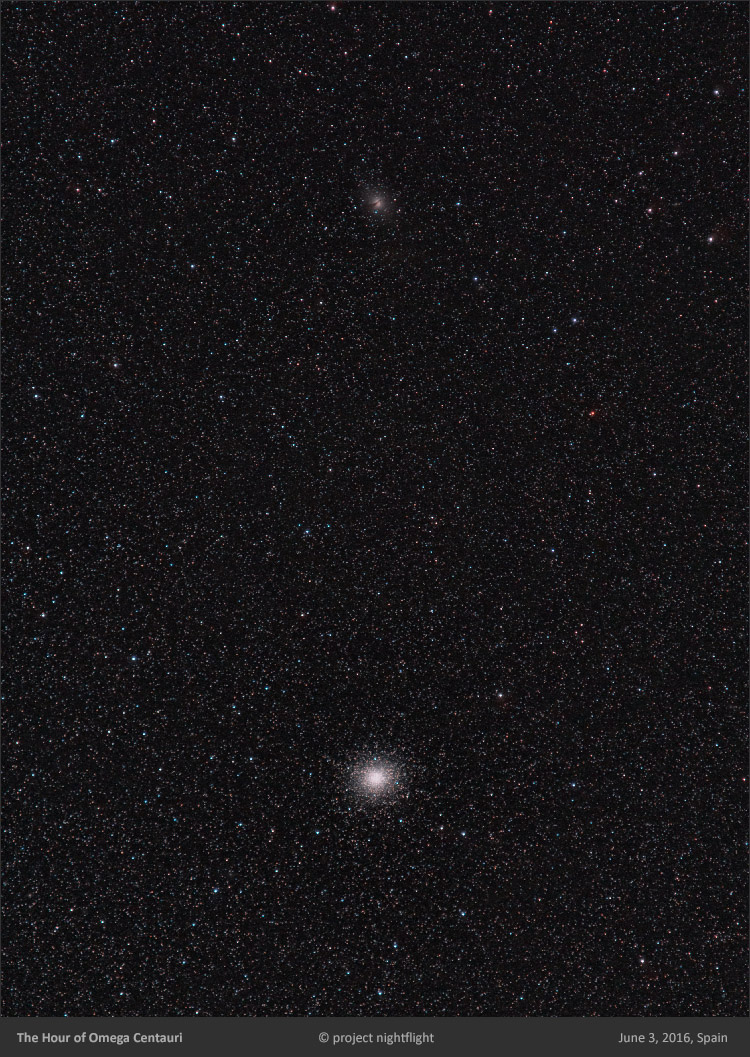
At a time late in spring the sky is unusually dark on cloudless nights at the end of twilight. The reason is the complete absence of the Milky Way, which is stretched
flat on the horizon. This starts at the beginning of May at nightfall. It is sidereal time 13h, the hour of Omega Centauri. For at that time, that remarkable naked-eye
object crosses the meridian right after dusk ends. For observers in the northern hemisphere from latitudes less than 37 degrees this is a consolation for the missing
marvel of the Milky Way.
Omega Centauri is in fact no less spectacular than any region of the Milky Way. It is easily visible to the unaided eye, stunning in binoculars and a true gem when
observed through a telescope. And it comes as a double feature. In binoculars the famous radio galaxy Centaurus A is visible in the same field of view. The ghost-
like galaxy is only 4 degrees north of the brighter Omega Centauri cluster.
This project nightflight image was shot on La Palma island in Spain, Europe, and shows Omega Centauri with its close neighbor NGC 5128, the Centaurus A galaxy.
See here another image of the Omega Centauri cluster above the typical Canarian pine trees.
[Released May 18, 2017]







